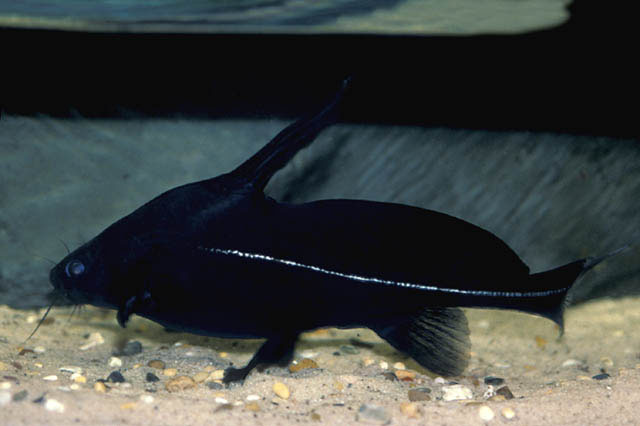| Bagridae (Bagrid catfishes) |
| 25 cm SL (male/unsexed) |
|
demersal; freshwater; pH range: 6.5 - 8; dH range: 24 |
| Asia: Thailand to Indonesia. |
|
Dorsal spines (total): 1-1; Dorsal soft rays (total): 7-7; Anal soft rays: 13-14. Body depth 3.7-3.9, head length 4.9-5.0 both in SL. Nasal barbels extending to or beyond eyes when laid back, maxillary barbels to operculum or pectoral fins, mandibulary and mental barbels shorter. Dorsal fin very high, with a serrated spine longer than body depth; adipose fin very large, long, originated immediately behind dorsal fin (Ref. 4792). Large broad mouth (Ref. 12693). Inner and outer mandibular barbels with straight (non-convoluted) margins; 18-29 serrae on long dorsal fin spine in adults; body dark brown to black with pale stripe along lateral line, sometimes, with 2-3 irregular yellowish brown vertical bands (Ref. 43281). |
| Occurs in large muddy rivers. Feeds on crustaceans, other small benthic animals and on detritus of higher plants which are much more slowly digested and remains in the gut for longer periods of time. Spawns at the beginning of the rainy season and utilizes the flooded riparian forests. Juveniles begin to appear in August. Marketed fresh (Ref. 12693). |
|
Least Concern (LC); Date assessed: 01 September 2018 Ref. (130435)
|
| harmless |
Source and more info: www.fishbase.org. For personal, classroom, and other internal use only. Not for publication.
